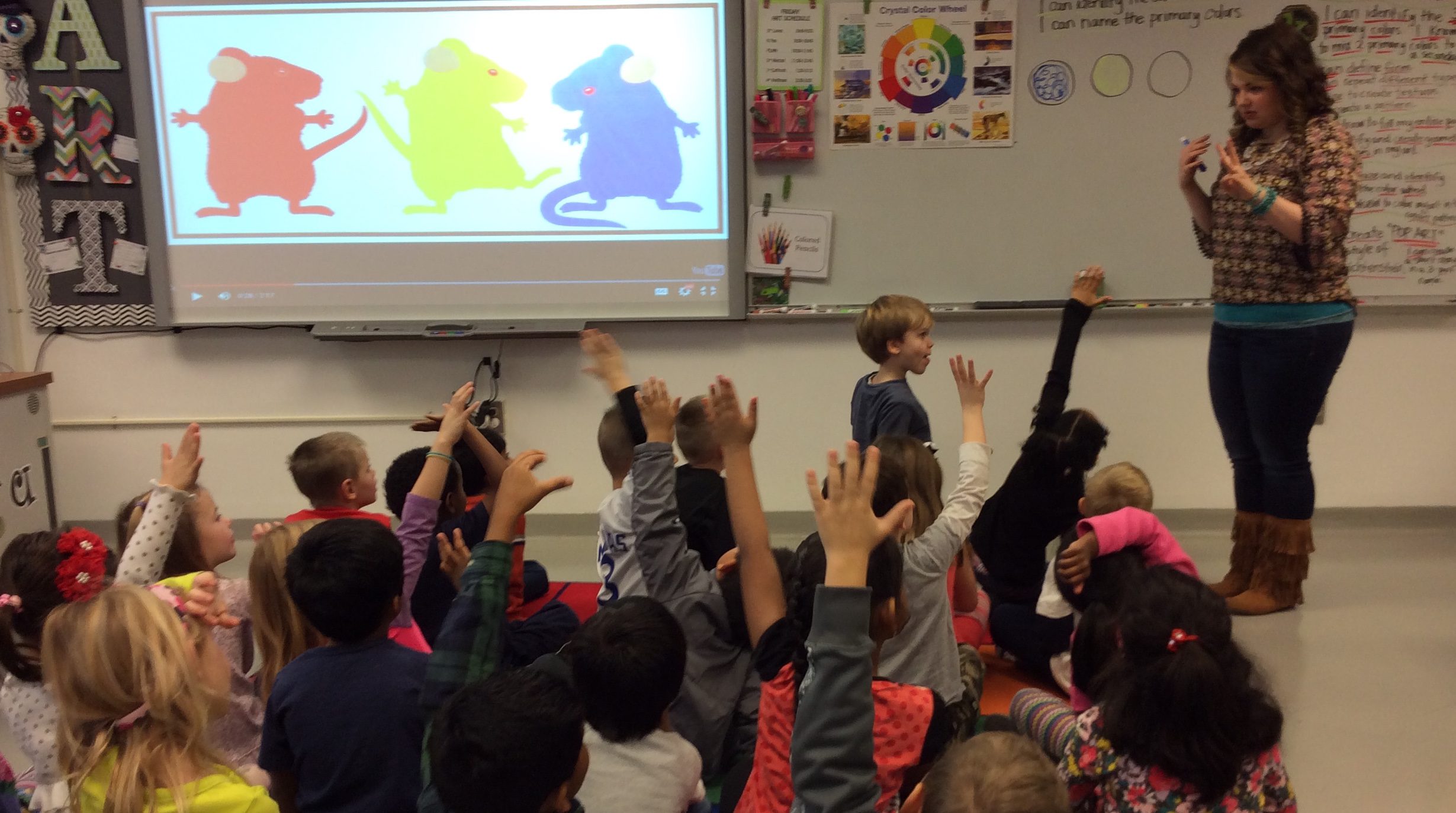If this is your first year of teaching at the elementary level, you might’ve been inundated with pee pants horror stories and the fear that you’ll never keep up with 500+ students. You might be wondering if you’ll be stuck wiping noses and tying shoes all day instead of teaching the dynamic curriculum you’ve dreamed up. Whether you’re just about to start or you’ve been at it for a few weeks already, here is our best advice for teaching elementary art for the first time.
Here are 10 things you need to know your first year teaching elementary art.
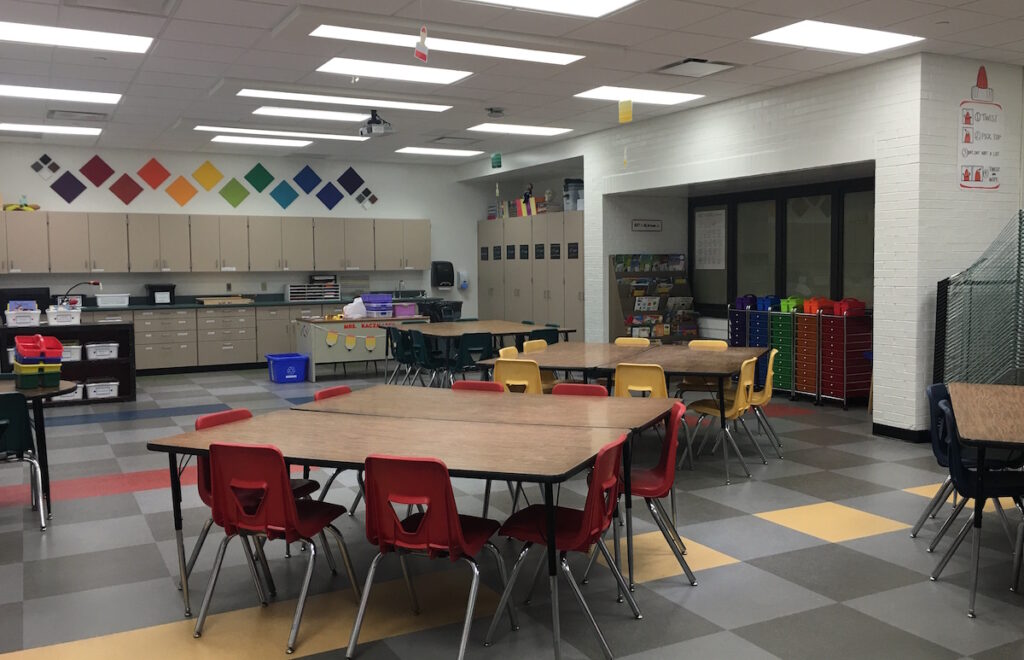
1. You will acquire minor celebrity status.
One of the best things about teaching at the elementary level is that you don’t really have to convince kids the art room is a place they want to be. Most kids at this age naturally enjoy art. Mention a new art technique and kids are willing to jump right in. In addition, building relationships with these students is generally easy. AOE Writer Abby Schukei puts it perfectly saying, “Kids will talk to you about nothing all the time. Most of the time you won’t have a clue what they are talking about, but they trust you and are choosing to share with you.” Simply listening will take you far.
2. Making students feel welcome and at ease is important.
The pressure put on elementary students these days can be overwhelming. You’ll quickly learn they are assessed and tested almost constantly. According to AOE Instructor Kathleen Cigich, “The art room is the best place for students to feel comfortable so make sure you create that type of environment. Make your classroom their stress-free place!” She goes on to say, “Elementary students aren’t going through crazy changes like puberty, but they are growing quickly and you are going to be a huge part of their foundational years.”
Consider creating a reading nook and hanging student art. Simple touches like these will help students feel at home.
3. You will teach an incredible range of ages and abilities.
My first year, I didn’t anticipate having to teach students how to use a pencil or how to cut with scissors. However, I quickly learned that’s exactly what needed to happen in order to get some of my kindergartners actually making art. Although disparities can be most apparent in the younger grades, kids in elementary school grow and mature at different rates. Be prepared to meet students where they are.
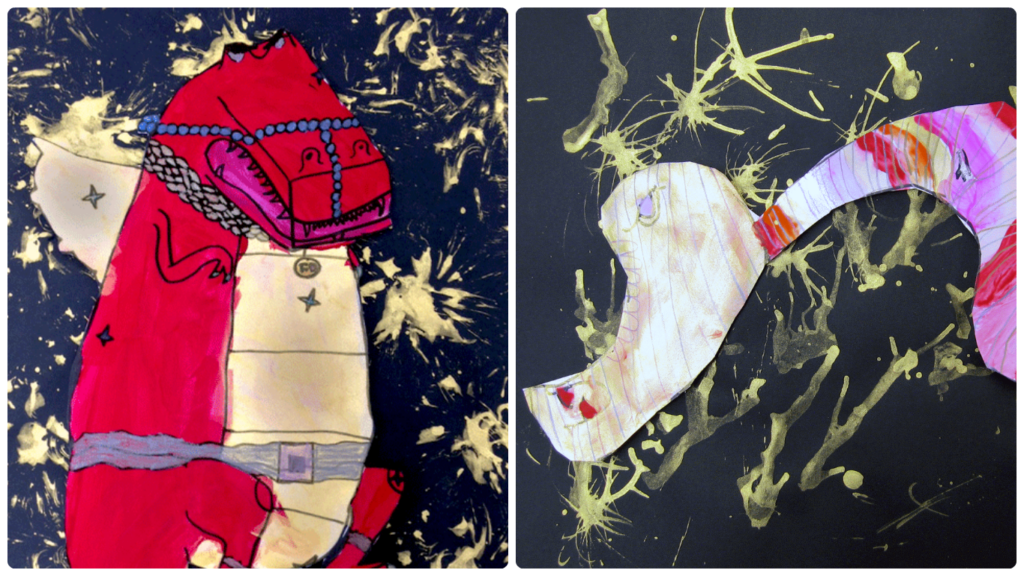
At the same time, don’t underestimate students just because they’re young. As AOE Writer Lee Ten Hoeve notes, “Elementary students can do so much more than most people think. Aim high.” If you’re interested, two great AOE courses that can help you hone your instruction for all your students are Rethinking Kindergarten and Reaching All Artists Through Differentiation.
4. Developing solid classroom management will be one of the most important things you do.
AOE Instructor Amanda Koonlaba shares some sage advice, “There is no shame in asking for help with developing a classroom management plan. It’s hard to train students on your expectations when you don’t see them every day. It can be even harder to ensure unwelcome behaviors get addressed.” If you don’t feel confident making a plan, reach out to other art teachers in your district or other specials teachers in your building for advice. There are also numerous resources on AOE, including an entire course dedicated to the topic.
The biggest piece of advice with any classroom management plan is to stay consistent. When your students know exactly what to expect and exactly what is and is not permissible, things will run more smoothly.
5. Be prepared to spend lots of time teaching things other than art.
Along with a solid classroom management plan, having consistent routines and procedures will be key. Again this goes back to consistent expectations. AOE Instructor Jennifer Borel states, “There should be a system and routine in place for everything. Order and organization will help you keep your sanity and will help your students be successful.”
Amanda Koonlaba sums it up nicely with this advice, “You cannot expect students to behave in a certain way unless you have taught them. The notion that students should just come to school knowing how to behave is irrelevant today. Model behavioral expectations and let them practice.” This includes things like how to enter and exit the classroom, how to ask a question, and how to move around the room.
In addition, you’ll need to teach basic clean up techniques like how to use a sponge. Take it from me, spending some time upfront on this will keep your classroom from turning into a water park during clean up time. You might be thinking, “But who doesn’t know how to use a sponge?” 6 and 7-year-olds. That’s who.
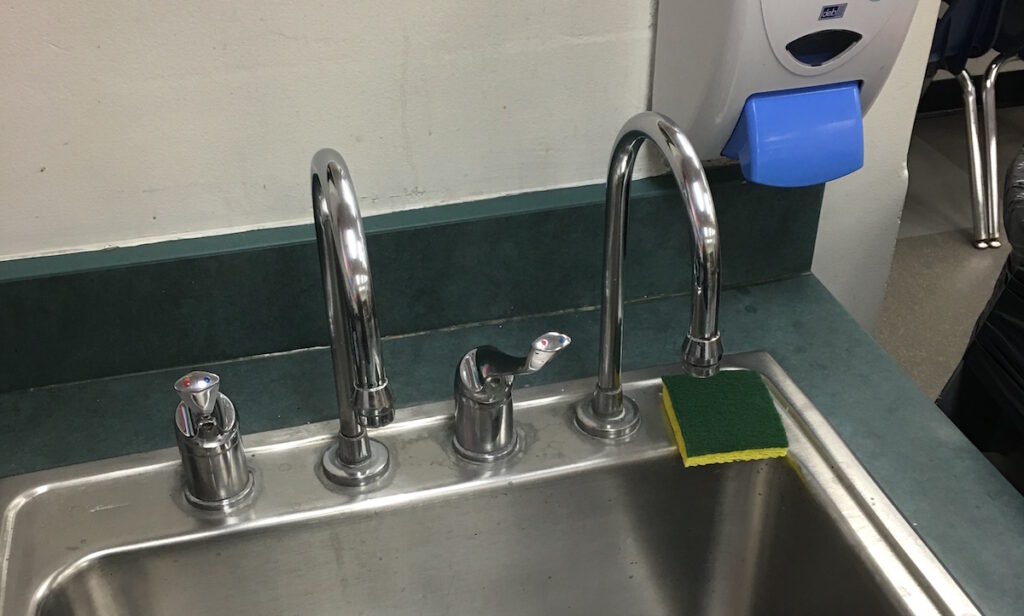
6. Elementary students are wildly creative. Don’t be afraid to say yes.
Unless you teach in a TAB classroom, it can be difficult to deviate from your master plan. However, saying yes a little bit more will help your students thrive. According to Kathleen Cigich, “There will be a lot of times when you have to say ‘no’, but remind yourself to say ‘yes.’ Can we have a dance party today? Yes. Can we please paint today? Yes. Can I have an extra piece of paper to take home? Yes. Can I come to art every day? YES! (I wish!)”
If a student asks you to deviate from the plan, think about it. If it’s feasible, why not let them?
7. Don’t be afraid to get creative with your instruction.
Costumes, props and generally silliness are a hit with elementary students. Teaching about Monet? Try out a fake French accent. They won’t care that it’s awful, and it may just help them remember something. Teaching about Frida? Throw some flowers in your hair and put a stuffed monkey on your shoulder. If you make a mistake, laugh at yourself. Your students will be incredibly forgiving.
8. Prepare for sharing time.
Lee illustrates exactly why it’s so important to have strategies to keep students on track with the following story.
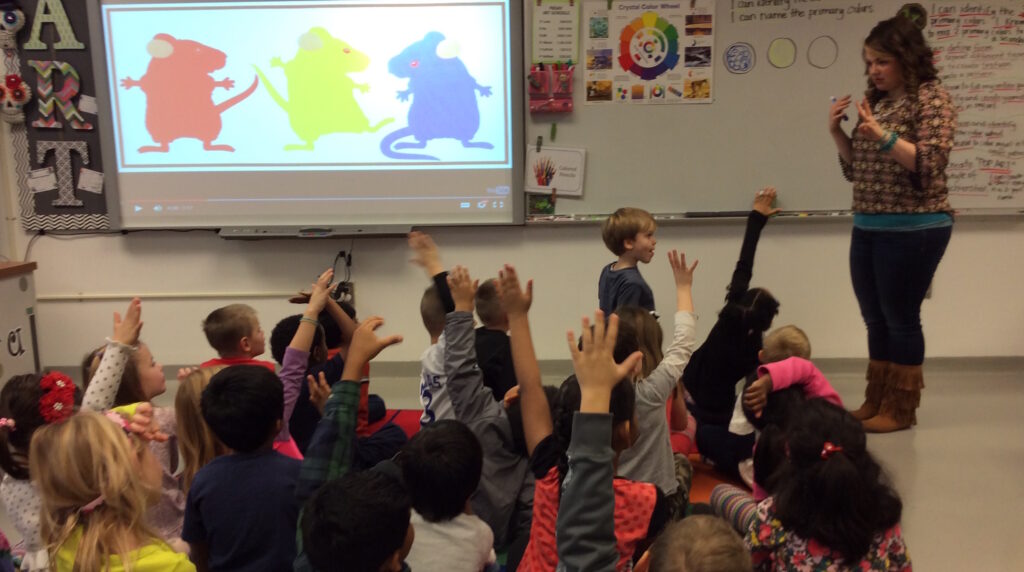
“When an elementary student wants to share something, they always find a way to work it into the conversation. It’s often easier to let them share and move on instead of forcing them back on topic. I recently did a cross-curricular lesson on penguins and the kids were SO excited to share. Time was running short, and I said we wouldn’t have time for everyone to share aloud. Well, many hands remained up. I said, ‘If your hand is up because you want to share what you know about penguins, please put it down so we can begin.’ Again, almost all the hands stayed up. I called on one child but said, ‘Gaby, this isn’t about penguins… is it?’ Gaby said, ‘No’ and then promptly began to recite the diet of a penguin. This happened with at least two more kids before I shut it down.”
If you’re looking for specific ideas about curbing oversharing, here are 5 to try!
9. Ok, Ok, you might have to deal with bodily fluids.
I’m not going to lie. In my elementary classroom, I dealt with (ahem) number one, number two and, well, vomit. But it was only a few times. Know that when these things occur, the guilty party is going to feel very embarrassed. Have a plan in place for these moments. Think about who you’ll call or what you’ll do ahead of time so you can be prepared. Have an alternate location you can move students to if needed. But above all, act with compassion, and try to make the event the least scarring for the student as possible.
10. You’ll never run out of funny stories to tell your family and friends.
You can’t make up half the things that kids will say to you over the course of a day. You also won’t believe some of the sentences you’ll have to utter aloud. I’ve said such phrases as, “OK, who glued this entire piece of paper to the floor?” “Oh no! That is an oil pastel, not a lipstick!” and “Please stop barking under the table, and come out to finish your jaguar drawing.”
Other team members had these gems to share:
On the first day of school, a kindergartner asked me if I was pregnant in front of the whole class. I said, “Nope. But I did just get married.” She replied, “Well you will be soon because that’s what happens when you get married.” – Jennifer Borel
I had a student ask me, “Mrs. Cigich, Why is your hair two different colors? It is dark brown at the top and yellow at the bottom!” I needed to get my hair highlighted. Elementary students are brutally honest! – Kathleen Cigich
Although days with elementary students require a ton of planning, organization, and patience, the payoff is wonderful. Be sure find some quiet moments during lunch or prep-time to recharge your batteries. And always, always keep an extra change of clothes at school. Good luck!
What advice do you have for first-year elementary teachers?
Any funny stories to share from your elementary classroom?
Magazine articles and podcasts are opinions of professional education contributors and do not necessarily represent the position of the Art of Education University (AOEU) or its academic offerings. Contributors use terms in the way they are most often talked about in the scope of their educational experiences.
